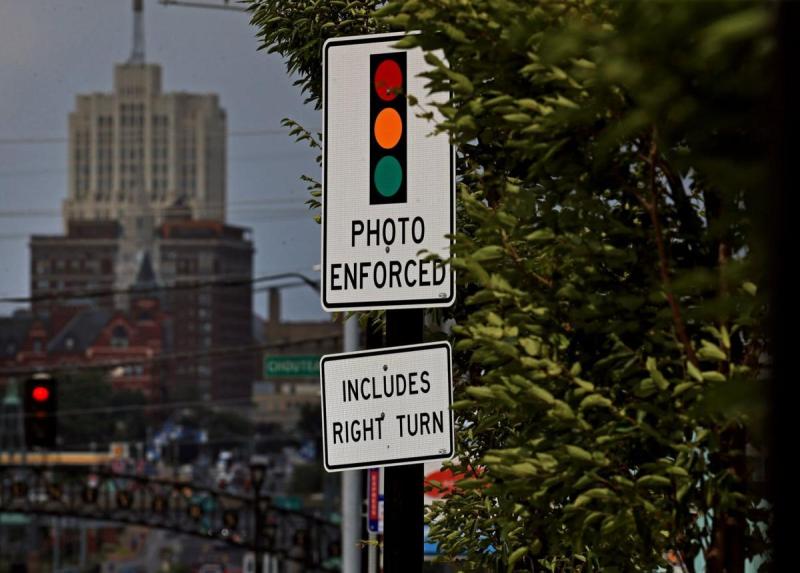The San Francisco Board of Supervisors unanimously supported a resolution to ban right on red at its regular meeting on Tuesday.
“This is another important step toward reducing traffic collisions and making our streets safer for pedestrians and cyclists,” said Supervisor Preston, who authored the bill. “We have a duty – especially to kids, seniors, persons with disabilities, and other vulnerable populations – to reach our Vision Zero goals and save lives as an urgent priority.”
From a statement from Luke Bornheimer, the safety advocate who started the recent push for no turn on red (NTOR):
The resolution simply calls for SFMTA to prepare a plan for a citywide policy, and SFMTA’s own evaluation showed that 92% of drivers complied with NTOR, close calls decreased by 80%, and drivers blocking crosswalks decreased 72% after SFMTA implemented NTOR at 50 intersections in the Tenderloin in 2021. No Turn On Red increases safety, access, and comfort for people, and drivers overwhelmingly comply even with traffic enforcement at historic lows. A citywide No Turn On Red policy is an easy win for street safety that will increase compliance and has widespread public support, including from people who primarily drive.
Furthermore, an analysis from Washington, DC showed that drivers failing to yield to people crossing the street on a green decreased by nearly 60% — No Turn On Red increases safety for people during green lights in addition red lights. That same analysis showed that No Turn On Red decreased conflicts between cars by 97% — No Turn On Red makes streets significantly safer for car drivers and passengers. Other studies found that allowing turns on red significantly increases crashes and injuries for people walking and people on bikes.[1][2][3] The data is clear: Implementing a citywide No Turn On Red policy will make streets safer for all people, especially children, seniors, people living with disabilities, and people walking and on bikes.
Right turns on red pose a threat of injury and death to bicyclists and pedestrians, disproportionately impacting communities of color, children, seniors, and those with disabilities, wrote Preston's staff in his release. According to the MTA, turn-on-red crashes account for 20% of pedestrian- or bicycle-related injury crashes involving drivers turning at signal-based intersections. MTA’s 2012-2015 collision report showed that 40% of collisions happen when drivers fail to yield to pedestrians in crosswalks.
The resolution will now be considered by the SFMTA board. If SFMTA follows through, San Francisco will join New York, which has banned right-on-red since forever. Washington, DC, Cambridge, Massachusetts, and Seattle also approved bans and are in various phases of putting up signs and rolling it out.
In successful Vision Zero countries (also know as societies where lives matter more than motoring convenience) right-on-red is banned for motorists unless posted.





